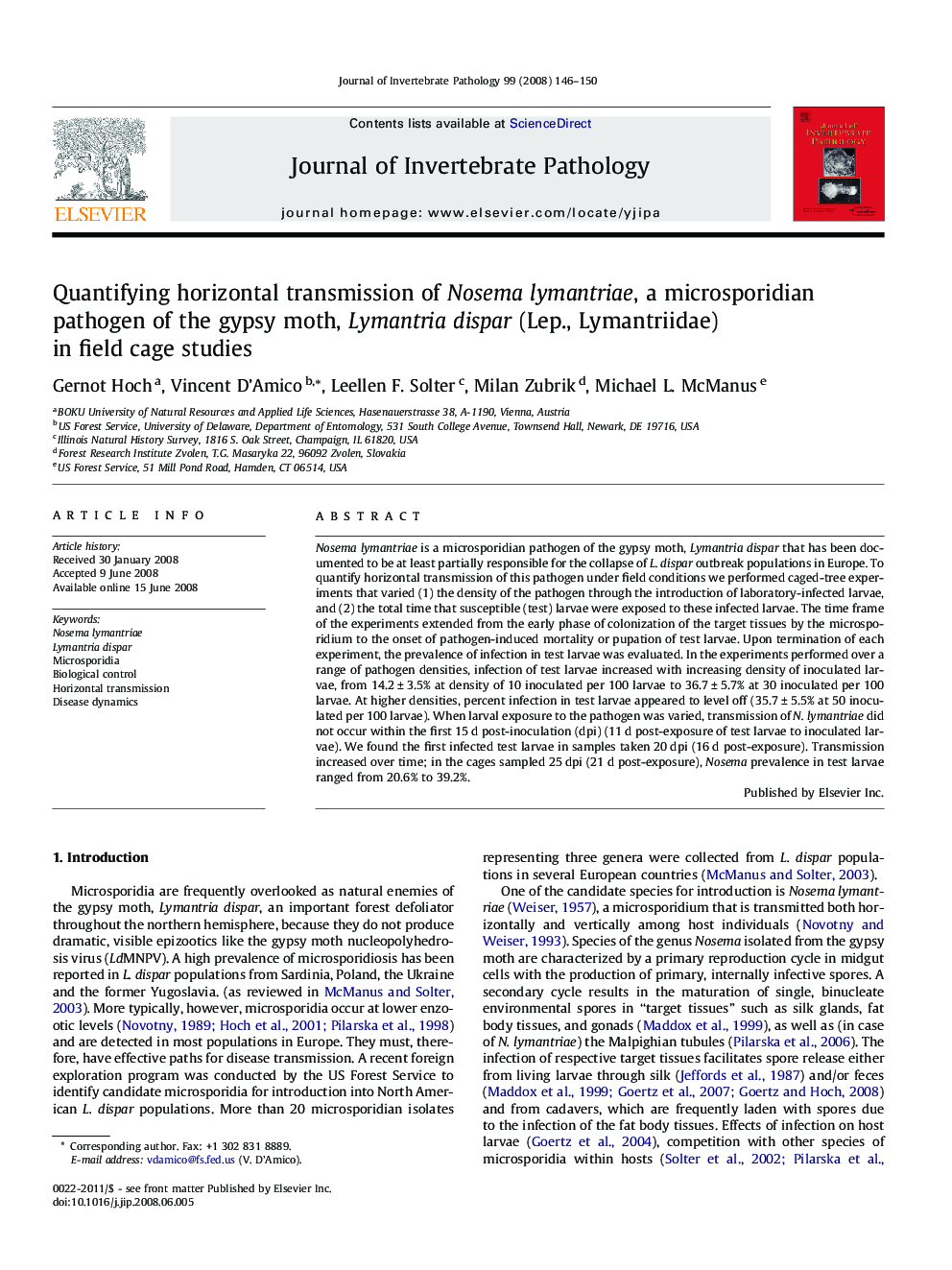| Article ID | Journal | Published Year | Pages | File Type |
|---|---|---|---|---|
| 4558387 | Journal of Invertebrate Pathology | 2008 | 5 Pages |
Nosema lymantriae is a microsporidian pathogen of the gypsy moth, Lymantria dispar that has been documented to be at least partially responsible for the collapse of L. dispar outbreak populations in Europe. To quantify horizontal transmission of this pathogen under field conditions we performed caged-tree experiments that varied (1) the density of the pathogen through the introduction of laboratory-infected larvae, and (2) the total time that susceptible (test) larvae were exposed to these infected larvae. The time frame of the experiments extended from the early phase of colonization of the target tissues by the microsporidium to the onset of pathogen-induced mortality or pupation of test larvae. Upon termination of each experiment, the prevalence of infection in test larvae was evaluated. In the experiments performed over a range of pathogen densities, infection of test larvae increased with increasing density of inoculated larvae, from 14.2 ± 3.5% at density of 10 inoculated per 100 larvae to 36.7 ± 5.7% at 30 inoculated per 100 larvae. At higher densities, percent infection in test larvae appeared to level off (35.7 ± 5.5% at 50 inoculated per 100 larvae). When larval exposure to the pathogen was varied, transmission of N. lymantriae did not occur within the first 15 d post-inoculation (dpi) (11 d post-exposure of test larvae to inoculated larvae). We found the first infected test larvae in samples taken 20 dpi (16 d post-exposure). Transmission increased over time; in the cages sampled 25 dpi (21 d post-exposure), Nosema prevalence in test larvae ranged from 20.6% to 39.2%.
